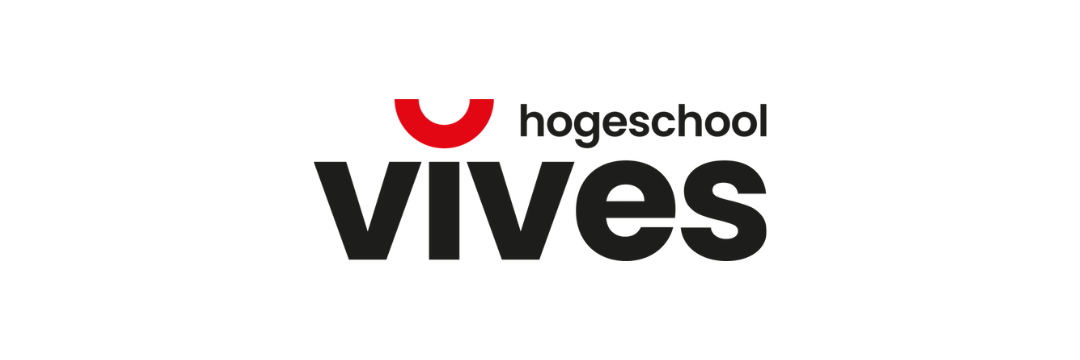De Glazen Bol van de Beurs: Kan AI Ons Vertrouwen Winnen?
Stel je voor: je overweegt te beleggen, maar de beurswereld voelt als een ondoordringbaar woud. Dan ontdek je een app die met slimme Artificiële Intelligentie (AI) voorspelt welke aandelen gaan stijgen. Klinkt als een droom, toch? Maar al snel bekruipt je een ongemakkelijk gevoel. De app geeft een advies, maar hoe dit tot stand komt, blijft een raadsel. Wat als het misgaat? Dit dilemma, de belofte van AI versus het gebrek aan inzicht, inspireerde Xander Corvers, masterstudent informatica aan de Universiteit Hasselt, tot een ambitieuze masterproef. Hij besloot niet zomaar een nóg slimmere AI te bouwen, maar juist een systeem dat de gebruiker helpt om die AI écht te begrijpen en, belangrijker nog, te vertrouwen.
Het Mysterie van de Algoritmische Adviseur
De financiële markten worden steeds meer beïnvloed door algoritmen. Complexe AI-modellen analyseren enorme hoeveelheden data, van historische koersen tot het laatste nieuws, om voorspellingen te doen over de richting van aandelen. Voor professionele handelaren is dit gesneden koek, maar voor de particuliere belegger, en zeker voor beginners, voelen deze systemen vaak aan als een black box. Je stopt er informatie in, en er komt een koop- of verkoopadvies uit, maar het cruciale “waarom” blijft in nevelen gehuld.

Het traditionele AI-beursadvies: een black box. De gebruiker ziet een voorspelling, maar de onderliggende redenering blijft verborgen.
Dit gebrek aan transparantie is een serieus struikelblok. Wanneer men niet begrijpt hoe een beslissing tot stand komt, is het moeilijk om erop te vertrouwen, zeker wanneer er geld op het spel staat. Het doel van de masterproef was dan ook om te onderzoeken hoe die black box een beetje geopend kon worden, specifiek gericht op mensen zonder diepgaande technische of financiële achtergrond. De unieke bijdrage van Xander ligt in het ontwerpen, implementeren en vervolgens grondig testen van een methode die precies dat probeert te doen.
AI's in Teamverband: Een Historische Aanpak voor Meer Begrip?
Xander ontwikkelde een interactief online dashboard. Geen zoveelste AI die beweert de toekomst te kennen, maar een tool die de gebruiker meeneemt in het denkproces. De kern van zijn aanpak berust op twee pijlers.
Ten eerste, in plaats van te leunen op één enkel, almachtig AI-model, integreert zijn systeem de voorspellingen van zes verschillende gespecialiseerde modellen. De aanpak is te vergelijken met een panel van experts. Sommige modellen zijn goed in het herkennen van trends op korte termijn, andere richten zich meer op langetermijnpatronen. Door hun voorspellingen naast elkaar te leggen, krijgt de gebruiker een genuanceerder beeld. Is er consensus? Of spreken ze elkaar tegen? Dat alleen al verschaft waardevolle informatie over de mogelijke onzekerheid.
De tweede, en misschien wel meest innovatieve component, is de door Xander ontworpen historische vergelijkingsmotor. Wanneer het systeem een voorspelling doet voor een aandeel, zoekt het gelijktijdig naar periodes in het verleden waarin de marktomstandigheden, gebaseerd op dezelfde technische indicatoren die de AI-modellen gebruiken, sterk leken op de huidige situatie. In zijn onderzoek gebruikte hij hiervoor data van IBM die tot wel zestig jaar teruggaat; deze data is waardevol vanwege de lange en consistente handelshistorie over diverse marktperiodes. De clou van de methode is dat het dashboard niet alleen die vergelijkbare historische patronen toont, maar ook hoe elk van de zes AI-modellen toen gepresteerd zou hebben. De gebruiker ziet dus niet alleen de voorspelling van vandaag, maar ook een soort rapportcijfer van de modellen in situaties die lijken op die van nu. Het systeem geeft vervolgens een aanbeveling – zoals “Sterk Kopen” of “Houden” – die expliciet gebaseerd is op de prestaties van de best presterende modellen in die historische context.

Het door Xander Corvers ontwikkelde systeem. Het geeft een onderbouwde aanbeveling door de voorspellingen van zes AI-modellen te combineren met hun bewezen prestaties op vergelijkbare historische patronen.
Proefpersonen aan het Woord: Wat Maakt een AI-Beursadvies Betrouwbaar?
Maar verhoogt zo’n systeem ook daadwerkelijk het vertrouwen? Om dat te toetsen, liet Xander 22 proefpersonen, de meesten met beperkte beleggingservaring, interageren met zijn dashboard. Ze kregen zowel een uitgeklede versie te zien als de volledige Multiple Models View (MMV). De uitgeklede versie, de zogenoemde Single Model View (SMV), toonde enkel de voorspelling van één model zonder historische context.
De feedback was opmerkelijk. Alle deelnemers gaven aan het MMV-systeem betrouwbaarder te vinden. Ze voelden zich significant zekerder bij het nemen van hypothetische beleggingsbeslissingen en gaven aan de aanbevelingen van het MMV beter te begrijpen. “Het zien van meerdere modeloutputs, de historische vergelijkingen en de prestaties uit het verleden, gaven me veel meer houvast”, was een veelgehoorde reactie. Opvallend was ook dat het MMV gebruikers significant beter hielp om de inherente risico's en onzekerheden van beursvoorspellingen te vatten. Het blootleggen van modelverschillen en de variabiliteit van uitkomsten in het verleden zorgden voor een meer gekalibreerd vertrouwen.
Hoewel het MMV logischerwijs als complexer werd ervaren dan de simplistische SMV, bleef de gebruiksvriendelijkheid hoog. Dit wijst erop dat gebruikers bereid zijn een zekere complexiteit te aanvaarden als de extra informatie hen echt helpt om de context beter te begrijpen en meer vertrouwen te krijgen.
Voorbij de Glazen Bol: Ligt de Toekomst van Beurs-AI in Transparantie?
De perfecte glazen bol die de beurs feilloos voorspelt, blijft vooralsnog sciencefiction. Zelfs de geavanceerde modellen in Xanders systeem sloegen de bal weleens mis, een realiteit die zijn dashboard niet verbergt maar juist omarmt. En juist daarin schuilt misschien wel de grootste winst. Het onderzoek toont aan dat de weg naar vertrouwen in AI niet geplaveid is met onfeilbare voorspellingen, maar met transparantie, context en de moed om ook de beperkingen te tonen. Door de black box een beetje open te wrikken, geeft hij beleggers – en bij uitbreiding iedereen die met complexe AI te maken krijgt – de tools in handen om niet blind te volgen, maar geïnformeerd te beslissen. En dat, in een wereld die steeds sneller digitaliseert, is goud waard.
Bibliografie
[ADE12] Mahmood Moein Aldin, Hasan Dehghan Dehnavi, and Somayye Entezari. "Evaluating the Employment of Technical Indicators in Predicting Stock Price Index Variations Using Artificial Neural Networks (Case Study: Tehran Stock Exchange)". In: International Journal of Business and Management 7.15 (2012), p. 25. DOI: 10.5539/ijbm.v7n15p25. URL: https://doi.org/10.5539/ijbm.v7n15p25.
[Afr+24] Saleh Afroogh et al. "Trust in AI: progress, challenges, and future directions". In: Humanities and Social Sciences Communications (2024). DOI: 10.1057/s41599-024-04044-8. URL: https://doi.org/10.1057/s41599-024-04044-8.
[Ali23] Ali. Unlocking the Secrets of Financial Time Series: A Deep Dive into Autoregressive Models (AR). 2023. URL: https://medium.com/@Alidotab/unlocking-the-secrets-of-financial-time-series-a-deep-dive-into-autoregressive-models-ar-b2e58428928e.
[Bar+20] Alejandro Barredo Arrieta et al. "Explainable Artificial Intelligence (XAI): Concepts, Taxonomies, Opportunities and Challenges Toward Responsible AI". In: Information Fusion (2020). URL: https://www.sciencedirect.com/science/article/pii/S1566253519308103.
[BB21] Milo Bianchi and Marie Briere. "Robo-Advising: Less AI and More XAI?" In: SSRN Electronic Journal (2021). URL: https://ssrn.com/abstract=3825110.
[Bei20] Jan Beitner. PyTorch Forecasting Documentation. Read the Docs. 2020. URL: https://pytorch-forecasting.readthedocs.io/en/v1.2.0/index.html.
[BGC22] Malti Bansal, Apoorva Goyal, and Apoorva Choudhary. "Stock Market Prediction with High Accuracy using Machine Learning Techniques". In: Procedia Computer Science. Elsevier, 2022. URL: https://www.sciencedirect.com/science/article/pii/S1877050922020993.
[BK12] Marshall E. Blume and Donald B. Keim. "Institutional Investors and Stock Market Liquidity: Trends and Relationships". In: Jacobs Levy Equity Management Center for Quantitative Financial Research Paper (2012). URL: https://ssrn.com/abstract=2147757.
[BK23] Weerapat Buachuen and Pittipol Kantavat. "Automated Stock Trading System using Technical Analysis and Deep Learning Models". In: (2023). URL: https://doi.org/10.1145/3628454.3631670.
[Bre01] Leo Breiman. "Random Forests". In: Machine Learning 45.1 (2001). DOI: 10.1023/A:1010933404324. URL: https://link.springer.com/article/10.1023/A:1010933404324.
[CG16] Tianqi Chen and Carlos Guestrin. “XGBoost: A Scalable Tree Boosting System". In: Proceedings of the 22nd ACM SIGKDD International Conference on Knowledge Discovery and Data Mining. Association for Computing Machinery, 2016, pp. 785-794. DOI: 10.1145/2939672.2939785. URL: https://doi.org/10.1145/2939672.2939785.
[CH15] Tianqi Chen and Tong He. "Higgs Boson Discovery with Boosted Trees". In: Proceedings of the HEPML 2014 Workshop. Vol. 42. Journal of Machine Learning Research, 2015, pp. 69-80. URL: http://proceedings.mlr.press/v42/chen14.html.
[Cha+24] Victor Chang et al. "Predicting Economic Trends and Stock Market Prices with Deep Learning and Advanced Machine Learning Techniques". In: Electronics 13.17 (2024). DOI: 10.3390/electronics13173396. URL: https://doi.org/10.3390/electronics13173396.
[Cha21] Inc. Charles Schwab & Co. "Trading Volume as a Market Indicator". In: Charles Schwab (2021). URL: https://www.schwab.com/learn/story/trading-volume-as-market-indicator.
[Cha22] S. Kumar Chandar. "Convolutional neural network for stock trading using technical indicators". In: Automated Software Engineering 29 (2022). DOI: 10.1007/s10515-021-00303-z. URL: https://doi.org/10.1007/s10515-021-00303-z.
[Chi22] David Joseph Chiumera. "Deep Reinforcement Learning for Quantitative Finance: Time Series Forecasting using Proximal Policy Optimization". Master of Information Technology (M.I.T.) Carleton University, 2022. DOI: 10.22215/etd/2022-15153. URL: https://hdl.handle.net/20.500.14718/42718.
[CK24] Jurgita Cerneviciene and Audrius Kabasinskas. "Explainable artificial intelligence (XAI) in finance: a systematic literature review". In: Artificial Intelligence Review 57 (2024), p. 216. DOI: 10.1007/s10462-024-10854-8. URL: https://doi.org/10.1007/s10462-024-10854-8.
[Cor21] Edoardo Corallo. Analysis of the log files of the StoRM storage system used by the ATLAS experiment, performed with Anomaly Detection through Deep Learning. Tech. rep. Alma Mater Studiorum - Università di Bologna, Scuola di Scienze, Dipartimento di Fisica e Astronomia, 2021. URL: https://123dok.org/document/dy4e3j9q-analysis-storm-storage-experiment-performed-anomaly-detection-learning.html.
[Cur24] Timothy Currie. "Trust in the 100% Remote Workplace in High Growth Technology Consulting Firms". PhD thesis. University of Southern California, Rossier School of Education, 2024. URL: https://doi.org/10.25549/usctheses-oUC113996WQ2.
[DA12] Brett Drury and José Almeida. "Predicting Market Direction from Direct Speech by Business Leaders". In: 2012. DOI: 10.4230/OASIcs.SLATE.2012.163. URL: https://www.researchgate.net/publication/267264720_Predicting_Market_Direction_from_Direct_Speech_by_Business_Leaders.
[Dev22] XGBoost Developers. XGBoost Parameters. XGBoost Documentation. 2022. URL: https://xgboost.readthedocs.io/en/stable/parameter.html.
[Dev25] LightGBM Developers. lightgbm.LGBMRegressor Class Reference. Microsoft Corporation. 2025. URL: https://lightgbm.readthedocs.io/en/latest/pythonapi/lightgbm.LGBMRegressor.html.
[Fam70] Eugene F Fama. "Efficient Capital Markets A Review of Theory and Empirical Work". In: Journal of finance (1970). URL: https://doi.org/10.2307/2325486.
[Fas24] FasterCapital. 30 70 Levels - Measuring Momentum in Stock Trends and The Ultimate Oscillator. 2024. URL: https://fastercapital.com/keyword/30-70-levels.html.
[Gan20] Akhilesh Ganti. "Adjusted Closing Price: How It Works, Types, Pros & Cons". In: Investopedia (2020). URL: https://www.investopedia.com/terms/a/adjusted_closing_price.asp.
[Gee24] The Forex Geek. Moving Average Alternatives. 2024. URL: https://theforexgeek.com/moving-average-alternatives.
[GMR04] Joao Gama, Pedro Medas, and Ricardo Rocha. "Forest trees for on-line data". In: Proceedings of the 2004 ACM Symposium on Applied Computing. Association for Computing Machinery, 2004, pp. 632-636. DOI: 10.1145/967900.968033. URL: https://doi.org/10.1145/967900.968033.
[Gon+20] Sergio González et al. "A practical tutorial on bagging and boosting based ensembles for machine learning: Algorithms, software tools, performance study, practical perspectives and opportunities”. In: Information Fusion (2020). URL: https://doi.org/10.1016/j.inffus.2020.07.007.
[Han+21] Kazuaki Hanawa et al. Evaluation of Similarity-based Explanations. 2021. URL: https://arxiv.org/abs/2006.04528.
[HBP23] Htet Htet Htun, Michael Biehl, and Nicolai Petkov. "Survey of feature selection and extraction techniques for stock market prediction". In: Financial Innovation 9 (2023). DOI: 10.1186/s40854-022-00441-7. URL: https://doi.org/10.1186/s40854-022-00441-7.
[HS97] Sepp Hochreiter and Jurgen Schmidhuber. "Long Short-Term Memory". In: Neural Comput. 9.8 (1997), pp. 1735-1780. DOI: 10.1162/neco.1997.9.8.1735. URL: https://doi.org/10.1162/neco.1997.9.8.1735.
[HSK18] Bruno Miranda Henrique, Vinicius Amorim Sobreiro, and Herbert Kimura. "Stock price prediction using support vector regression on daily and up to the minute prices". In: The Journal of Finance and Data Science 4.3 (2018). DOI: https://doi.org/10.1016/j.jfds.2018.04.003. URL: https://www.sciencedirect.com/science/article/pii/S2405918818300060.
[Hu21] Xiaokang Hu. "Stock Price Prediction Based on Temporal Fusion Transformer". In: 2021 3rd International Conference on Machine Learning, Big Data and Business Intelligence (MLBDBI). 2021. DOI: 10.1109/MLBDBI54094.2021.00019. URL: https://ieeexplore.ieee.org/abstract/document/9731073.
[Huy24] Trung Phong Huyen Chau Nguyen Thiand Doan. "Data Processing and Feature Engineering for Stock Price Trend Prediction". In: Machine Learning and Other Soft Computing Techniques: Biomedical and Related Applications. Springer Nature Switzerland, 2024. URL: https://doi.org/10.1007/978-3-031-63929-6_17.
[JCC23] Qi Jin, Mihai Cucuringu, and Alvaro Cartea. "Correlation Matrix Clustering for Statistical Arbitrage Portfolios". In: Proceedings of the Fourth ACM International Conference on AI in Finance. Association for Computing Machinery, 2023, pp. 557-564. DOI: 10.1145/3604237.3626894. URL: https://doi.org/10.1145/3604237.3626894.
[Jog24] Aaryan Jogani. "The Basics of Technical Analysis". In: SSRN Electronic Journal (2024). URL: https://ssrn.com/abstract=4870943.
[Kar23] Evangelia Karageorgou. "Forecasting Spain's Electricity Load: A Comparative Analysis of Classical Time Series, Neural Networks, and Deep Learning Models". MA thesis. University of Macedonia, 2023. URL: https://dspace.lib.uom.gr/bitstream/2159/30101/4/KarageorgouEvangeliaMsc2023.pdf.
[Ke+17] Guolin Ke et al. "LightGBM: a highly efficient gradient boosting decision tree". In: Proceedings of the 31st International Conference on Neural Information Processing Systems. Curran Associates Inc., 2017, pp. 3149-3157. URL: https://dl.acm.org/doi/10.5555/3294996.3295074.
[Kha+22] Wasiat Khan et al. “Stock market prediction using machine learning classifiers and social media, news". In: Journal of Ambient Intelligence and Humanized Computing (2022). URL: https://www.researchgate.net/publication/339938321_Stock_market_prediction_using_machine_learning_classifiers_and_social_media_news.
[Kha+23] Azaz Khan et al. “A performance comparison of machine learning models for stock market prediction with novel investment strategy". In: PLOS ONE (2023). URL: https://journals.plos.org/plosone/article?id=10.1371/journal.pone.0286362.
[KYA19] Eiman Kanjo, Eman M.G. Younis, and Chee Siang Ang. "Deep Learning Analysis of Mobile Physiological, Environmental and Location Sensor Data for Emotion Detection". In: Information Fusion 49 (2019), pp. 46-56. ISSN: 1566-2535. DOI: 10.1016/j.inffus.2018.09.001. URL: https://kar.kent.ac.uk/68930/.
[Li+24] Jingshu Li et al. Overconfident and Unconfident AI Hinder Human-AI Collaboration. 2024. URL: https://arxiv.org/abs/2402.07632.
[Lim+20] Bryan Lim et al. Temporal Fusion Transformers for Interpretable Multi-horizon Time Series Forecasting. 2020. URL: https://arxiv.org/abs/1912.09363.
[LW24] Xinhe Liu and Wenmin Wang. "Deep Time Series Forecasting Models: A Comprehensive Survey”. In: Mathematics (2024). URL: https://www.mdpi.com/2227-7390/12/10/1504.
[Mag23] Nick Maggiulli. Why the Medallion Fund is the Greatest Money-Making Machine of All Time. 2023. URL: https://ofdollarsanddata.com/medallion-fund/.
[MH25] Seyed Mostafa Mostafavi and Ali Reza Hooman. "Key technical indicators for stock market prediction". In: Machine Learning with Applications 20 (2025), p. 100631. DOI: https://doi.org/10.1016/j.mlwa.2025.100631. URL: https://www.sciencedirect.com/science/article/pii/S2666827025000143.
[Mit24] Cory Mitchell. "Understanding an OHLC Chart and How to Interpret It". In: Investopedia (2024). URL: https://www.investopedia.com/terms/o/ohlcchart.asp.
[MZ24] Leila Mozaffari and Jianhua Zhang. "Predictive Modeling of Stock Prices Using Transformer Model". In: Proceedings of the 2024 9th International Conference on Machine Learning Technologies. Association for Computing Machinery, 2024. URL: https://doi.org/10.1145/3674029.3674037.
[Nar19] Aditya Vijay Narkar. "Stock price prediction using feature engineering and machine learning techniques". Master of Science Thesis. Kansas State University, Dec. 2019. URL: http://hdl.handle.net/2097/40219.
[Nic23] Steven Nickolas. "Trading Volume: Analysis and Interpretation". In: Investopedia (2023). URL: https://www.investopedia.com/ask/answers/041015/why-trading-volume-important-investors.asp.
[Nna24] Eugene Nnamdi. "Top Sources for OHLC Candlestick Data in the Crypto Market". In: Coinmonks (2024). URL: https://medium.com/coinmonks/top-sources-for-ohlc-candlestick-data-in-the-crypto-market-bd5111cb6340.
[NSK22] Sidra Naveed, Gunnar Stevens, and Dean-Robin Kern. "Explainable Robo-Advisors: Empirical Investigations to Specify and Evaluate a User-Centric Taxonomy of Explanations in the Financial Domain". In: IntRS@RecSys. 2022. URL: https://api.semanticscholar.org/CorpusID:252782003.
[Ore+20] Boris N. Oreshkin et al. N-BEATS: Neural basis expansion analysis for interpretable time series forecasting. 2020. URL: https://arxiv.org/abs/1905.10437.
[Pat+20] Pratik Patil et al. "Stock Market Prediction Using Ensemble of Graph Theory, Machine Learning and Deep Learning Models". In: Association for Computing Machinery, 2020. URL: https://doi.org/10.1145/3378936.3378972.
[Ped+11] Fabian Pedregosa et al. Scikit-learn: Machine Learning in Python. 2011. URL: https://scikit-learn.org/stable/index.html.
[Phu+24] Tran Phuoc et al. “Applying machine learning algorithms to predict the stock price trend in the stock market - The case of Vietnam". In: Humanities and Social Sciences Communications 11.1 (2024). DOI: 10.1057/s41599-024-02807-x. URL: https://doi.org/10.1057/s41599-024-02807-x.
[PJ16] Nada Petrusheva and Igor Jordanoski. "Comparative Analysis Between the Fundamental and Technical Analysis of Stocks". In: Journal of Process Management and New Technologies (2016). URL: https://doi.org/10.5937/JPMNT1602026P.
[PM23] Andy Patrizio and John Moore. “IBM (International Business Machines Corporation)". In: TechTarget (2023). URL: https://www.techtarget.com/searchitchannel/definition/IBM-International-Business-Machines.
[Qua24] Quantitativo. A different indicator: Using an unusual indicator to inform a strategy that delivers 21% annual returns since 2004. 2024. URL: https://www.quantitativo.com/p/a-different-indicator.
[Saul1] Jeff Sauro. Measuring Usability with the System Usability Scale (SUS). 2011. URL: https://measuringu.com/sus.
[Sir+19] Naadun Sirimevan et al. "Stock Market Prediction Using Machine Learning Techniques". In: 2019 International Conference on Advancements in Computing (ICAC). 2019. URL: https://ieeexplore.ieee.org/document/9103381.
[SK21] Jaideep Singh and Matloob Khushi. "Feature Learning for Stock Price Prediction Shows a Significant Role of Analyst Rating". In: Applied System Innovation 4.1 (2021). DOI: 10.3390/asi4010017. URL: https://www.mdpi.com/2571-5577/4/1/17.
[SMM23] Simon Schreibelmayr, Laura Moradbakhti, and Martina Mara. “First impressions of a financial AI assistant: differences between high trust and low trust users". In: Frontiers in Artificial Intelligence Volume 6 - 2023 (2023). DOI: 10.3389/frai.2023.1241290. URL: https://www.frontiersin.org/journals/artificial-intelligence/articles/10.3389/frai.2023.1241290.
[Sta24] StatMuse. When did International Business Machines go public? 2024. URL: https://www.statmuse.com/money/ask/when-did-international-business-machines-go-public.
[Sub+21] Abdulhamit Subasi et al. “Stock Market Prediction Using Machine Learning". In: Procedia Computer Science (2021). URL: https://www.sciencedirect.com/science/article/pii/S1877050921021128.
[Swa+25] Ashok Kumar Swami et al. “Artificial intelligence technology in materials selection, device engineering and parameter optimisation for triboelectric nanogenerator". In: Materials Today Communications 46 (2025), p. 112553. DOI: https://doi.org/10.1016/j.mtcomm.2025.112553. URL: https://www.sciencedirect.com/science/article/pii/S2352492825010657.
[TNP23] Quy Tran Van, Tram Nguyen Bao, and Tu Pham Minh. “Integrated Hybrid Approaches for Stock Market Prediction with Deep Learning, Technical Analysis, and Reinforcement Learning". In: Association for Computing Machinery, 2023, pp. 213-220. DOI: 10.1145/3628797.3629018. URL: https://doi.org/10.1145/3628797.3629018.
[Vel23] Cris Velasquez. "Mining Patterns in Stocks with PCA and DTW". In: Medium (2023). URL: https://medium.com/@crisvelasquez/mining-patterns-in-stocks-with-pca-and-dtw-e98651657f37.
[Vir13] Agnes Virlics. "Investment Decision Making and Risk". In: Procedia Economics and Finance (2013). URL: https://www.sciencedirect.com/science/article/pii/S2212567113001299.
[VV14] Javier Vidal-García and Marta Vidal. Is Your Fund Watching Out for You? 2014. URL: https://ssrn.com/abstract=2230247.
[Wan+19] Zirui Wang et al. “Characterizing and Avoiding Negative Transfer”. In: Proceedings of the IEEE/CVF Conference on Computer Vision and Pattern Recognition (CVPR). 2019. URL: https://openaccess.thecvf.com/content_CVPR_2019/html/Wang_Characterizing_and_Avoiding_Negative_Transfer_CVPR_2019_paper.html.
[WL21] Tong Wang and Qihang Lin. "Hybrid Predictive Models: When an Interpretable Model Collaborates with a Black-box Model". In: Journal of Machine Learning Research 22.137 (2021), pp. 1–38. URL: http://jmlr.org/papers/v22/19-325.html.
[Woj+20] H. M. Wojton et al. “Initial validation of the trust of automated systems test (TOAST)". In: Journal of Social Psychology 160.6 (2020), pp. 735–750. URL: https://testscience.org/measuring-user-trust-in-systems.
[XL24] Yiqiong Xue and Xiaodong Liu. "An Approach for Stock Modeling and Prediction Using Latency-based HMM and Bayesian Network". In: (2024). URL: https://doi.org/10.1145/3695719.3695725.
[Yan25] Aixiang Yang. "Big data-driven corporate financial forecasting and decision support: a study of CNN-LSTM machine learning models". In: Frontiers in Applied Mathematics and Statistics 11 (2025). DOI: 10.3389/fams.2025.1566078. URL: https://www.frontiersin.org/articles/10.3389/fams.2025.1566078.
[Yeo+25] Wei Jie Yeo et al. "A comprehensive review on financial explainable AI". In: Artificial Intelligence Review 58 (2025), p. 189. DOI: 10.1007/s10462-024-11077-7. URL: https://doi.org/10.1007/s10462-024-11077-7.
[ZE17] Xiao Zhong and David Enke. "Forecasting daily stock market return using dimensionality reduction". In: Expert Systems with Applications 67 (2017), pp. 126-139. DOI: https://doi.org/10.1016/j.eswa.2016.09.027. URL: https://www.sciencedirect.com/science/article/pii/S0957417416305115.
[Zhe+24] Jiajian Zheng et al. "The Random Forest Model for Analyzing and Forecasting the US Stock Market in the Context of Smart Finance". In: arXiv preprint arXiv:2402.17194 (2024). URL: https://arxiv.org/abs/2402.17194.
[Zuc19] Gregory Zuckerman. The Man Who Solved the Market: How Jim Simons Launched the Quant Revolution. Penguin Press, 2019.













